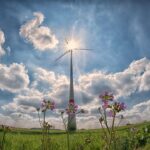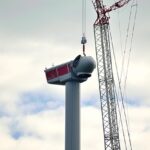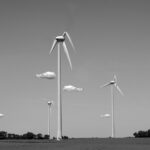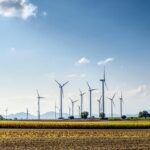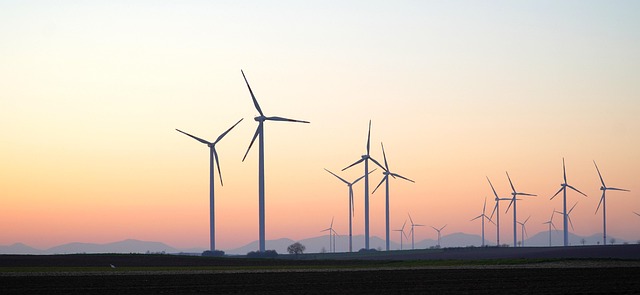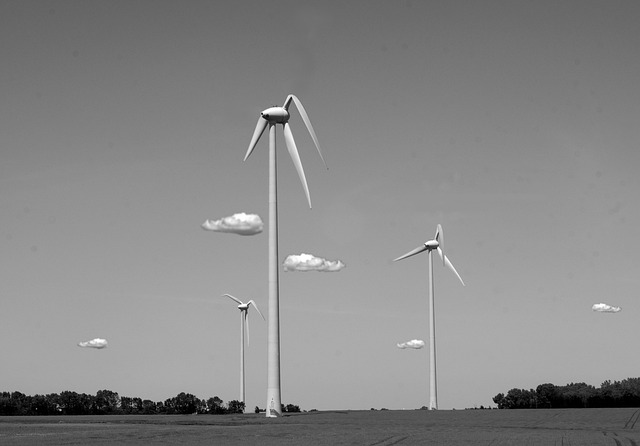The Silent Revolution: Unveiling the Potential of Wind Power
In the quest for sustainable energy, one of the most promising yet often underrated solutions is wind power. As society becomes more aware of the adverse effects of fossil fuels on the environment, the spotlight is turning toward renewable sources of energy. Among these, wind power is quietly ushering in a revolution, providing an abundant, clean, and renewable energy source that holds tremendous potential for future energy needs.
The Rise of Wind Energy
Wind energy isn’t a new concept; its utilization dates back to ancient civilizations that harnessed wind for sailing and milling grain. However, the modern wind power industry has experienced exponential growth over the past few decades. According to the Global Wind Energy Council, as of 2022, the world had installed over 800 gigawatts (GW) of wind power capacity.
This expansion can be attributed to several factors, including technological advancements, economic incentives, and a growing global awareness of climate change. Wind turbines have become more efficient and reliable, while offshore wind farms have opened up vast areas previously untapped for energy production.
How Wind Power Works
The mechanism behind wind power is relatively straightforward. Wind turbines convert kinetic energy from the wind into mechanical energy, which is then transformed into electricity. Here’s a simplified breakdown of the process:
The wind turns the blades of a turbine, which are connected to a rotor. As the rotor spins, it activates a generator that produces electricity. The amount of electricity generated is dependent on wind speed—higher speeds produce more power. Additionally, wind turbines are often equipped with sensors to optimize performance, ensuring they operate efficiently even in variable wind conditions.
Types of Wind Turbines
There are primarily two types of wind turbines: horizontal-axis wind turbines (HAWT) and vertical-axis wind turbines (VAWT). HAWTs are the most commonly used, featuring blades that rotate around a horizontal axis. These turbines are typically installed on tall towers to capture wind at higher altitudes, where it flows more steadily and powerfully.
On the other hand, VAWTs have blades that rotate around a vertical axis, making them more versatile in capturing wind from different directions. While less common for large-scale power generation, VAWTs can be advantageous in urban settings where space is limited and wind patterns are erratic.
Environmental Benefits
Wind power is lauded for its environmental advantages. As a renewable energy source, it helps reduce greenhouse gas emissions, which are a significant contributor to climate change. Wind turbines produce electricity without the combustion of fossil fuels, thus negating the release of harmful pollutants.
Additionally, the land used for wind farms can still be utilized for agriculture, allowing for dual land use that does not disrupt local ecosystems significantly. Furthermore, studies have shown that replacing fossil fuel energy with wind power can significantly improve air quality and public health.
Economic Impact
The financial implications of wind power are substantial. Wind energy has become increasingly cost-competitive with traditional energy sources. The levelized cost of energy (LCOE) for onshore wind has decreased by more than 70% in the last decade, making it one of the cheapest sources of new electricity.
Moreover, the wind industry creates jobs—ranging from manufacturing to installation and maintenance. The Global Wind Energy Council reported that the sector employed 1.5 million people worldwide in 2021, a figure that continues to grow as investment in wind energy increases.
Challenges Facing Wind Power
Despite its potential, wind power faces several challenges that need to be addressed to maximize its contribution to the energy mix. One significant issue is the intermittency of wind; the availability of wind is less predictable compared to a constant energy source like coal or natural gas. This variability necessitates the development of efficient energy storage solutions or backup systems to ensure a stable energy supply.
Another challenge is the location of wind farms. Optimal sites for wind farms are often remote and may require substantial infrastructure development to connect them to the grid. This could involve significant financial investment and logistical challenges in terms of installation and maintenance.
Technological Innovations
Recent technological advancements have the potential to overcome many of the current challenges associated with wind power. For instance, improvements in turbine design have led to larger and more efficient turbines capable of generating more electricity from lower wind speeds.
Moreover, the integration of artificial intelligence and data analytics has enhanced the operation of wind farms, allowing for better forecasting, site selection, and maintenance procedures. Advanced control systems can help optimize the output of turbines and reduce downtime, thus improving overall efficiency and profitability.
The Future of Wind Power
The future of wind power appears bright. As countries work toward reducing their carbon footprints and transitioning to cleaner energy sources, investments in wind energy are surging. Governments and private investors alike are recognizing the importance of renewable energy, with policies promoting the development of wind farms across the globe.
Furthermore, innovations in offshore wind technology are poised to revolutionize energy generation capacities. Offshore wind farms can take advantage of stronger and more consistent winds over ocean waters, leading to significantly increased energy outputs. Many countries, especially in Europe and Asia, are investing heavily in offshore wind projects.
Global Examples of Wind Energy Success
Countries around the world have exemplified the successful implementation of wind energy. Denmark, for instance, stands as a leader in wind power, generating approximately 47% of its electricity from wind in recent years. The country has invested heavily in both onshore and offshore wind projects, showcasing how commitment to renewable energy can significantly shift a nation’s energy paradigm.
The United States is another major player, with Texas leading the charge as the state with the highest wind energy capacity. With favorable policies and abundant land, the U.S. has been able to capitalize on wind power to meet its growing energy demands.
China also has emerged as the world’s largest producer of wind energy, consistently increasing its capacity through large-scale projects. The Chinese government’s commitment to renewable energy has accelerated the growth of the wind power sector, supporting economic development and environmental sustainability.
Conclusion
As we stand at a crossroads in energy production, the silent revolution of wind power is an essential aspect of our sustainable future. Its potential is vast, offering numerous benefits from environmental sustainability to economic growth. While challenges remain, ongoing technological innovations and increased investments point toward a promising future for wind energy.
Whether through onshore or offshore developments, the continued push for wind power will be instrumental in addressing the pressing energy demands of our time. The wind is blowing towards a cleaner, greener world, and embracing this silent revolution can lead to transformative change in our relationship with energy and the environment.
